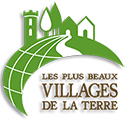Giornico
Situated on the alluvial rise originated, in distant times, by the Vignoi and Sant'Anna streams, closed to the north by the rocky crags of the Biaschina (living testimony of a gigantic scree slope), Giornico represents the junction of the Ticino plain with the more typically alpine landscape.
Its particular geographic position and the constant attention of a strategic nature to which it was subjected for many centuries, with the aim of exercising vigilant control over the St Gotthard route, suggested to Stefano Franscini the image - which is the definition of a role - of 'gateway to the Leventina'.
But what characterises Giornico above all is the continuous intertwining of the natural element with the work of man: in fact, the inventory of environmental and cultural assets is extraordinarily rich to the point that the entire village constitutes a veritable museum.
Giornico is a village unlike any other precisely because it possesses a greater amount of beauty. Suffice it to mention the Atto Tower, linked to the donation of the feudal rights of the Tre Valli to the Canons of Milan Cathedral, the churches of San Nicola - an authentic and recognised jewel of Romanesque architecture -, the parish church of San Michele, Santa Maria del Castello, San Pellegrino, the other oratories, Casa Stanga (now home to the Leventina Ethnographic Museum), numerous ancient houses of considerable interest, the two medieval humpback bridges connecting the island to the two banks of the Ticino, the mysterious ruins of Castellaccio. Not forgetting, as a testimony to the historical vicissitudes, the Monument of the Battle of Sassi Grossi or, in more recent times, the museum of contemporary sculptures called "La Congiunta".
Da non perdere
Caratteristiche
There are no upcoming events.
| Culture |  |
| Landscape |  |
| Gastronomy |  |







